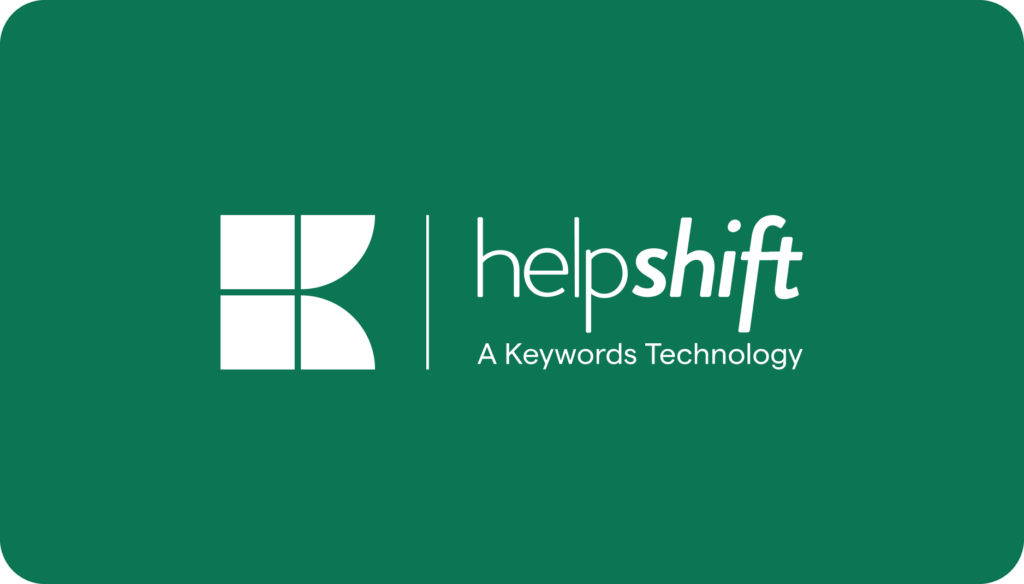Customers remember how you treat them, not just what you sell them.
In fact, 82% of customers demand immediate problem-solving, and 78% expect personalized interaction — good customer support isn’t optional anymore.
Meeting these expectations isn’t easy. Your team might struggle with high ticket volumes, complex questions, and the need for round-the-clock availability. When internal resources hit their limits, outsourcing becomes worth considering.
But, bringing in outside help raises practical concerns. Will partners represent your brand properly? How do you measure their performance? What about costs versus benefits?
This guide will show you when to outsource, how to do it effectively, and what pitfalls to avoid along the way.
What Is Customer Service Outsourcing?
Customer service outsourcing means hiring an external firm, team, or individuals (sometimes) to handle your customer support. These third parties answer calls, respond to emails, manage live chats, and resolve customer issues that would otherwise fall to your employees.
Unlike temporary staffing or consulting, these outsourced teams become part of your company in the customer’s eyes. They learn your products, follow your guidelines, and represent your brand — they just happen to work for a different company. You still see all the data and results, but you don’t have to build and manage the support team yourself.
Now, how does outsourcing customer service differ from having an in-house team?
| Factor | Customer service outsourced | Customer service in-house |
| Cost | Lower (scaling cost, reduced overhead) | Higher (recruitment, training, salaries, infrastructure) |
| Scalability | Easy to scale up/down based on demand | Requires time and resources to expand and decreasing headcount is highly complex and leads to non-compliance |
| Expertise | Access to specialists and advanced technologies | Limited by internal training capabilities |
Customer Service Outsourcing Models: What Are Your Options?
Not all outsourcing is the same. Here are the various types of you need to know about your options:
1. Location-based models: onshore vs offshore support
- Onshore support means hiring a company in your own country. You’ll pay more, but your customers talk to people who speak like them and get their cultural references. If your customers hate explaining themselves twice or get frustrated by accent barriers, this is your safest bet.
- Offshore support moves your customer service to places like India, the Philippines, or South Africa. It’s way cheaper; you can cut costs nearly in half compared to local teams. The downside? Time zones can be a pain, and cultural disconnects happen more often.
Note: Many companies now split the difference by working with near-shore teams; for example, US companies outsource customer service to partners in Latin America. They’re closer in time zones and culture than Asia-based support but still cost less than domestic options.
2. Structure-based models: shared vs dedicated agents
- Shared model is where your agents handle calls and messages for several companies, including yours. This works fine if most of your customer questions are basic. It’s the cheapest option, but these agents won’t know your products as deeply or sound exactly like your brand.
- Dedicated model where the agents only work for you. They learn all about your products and business, and customers can’t tell they’re not your direct employees. It costs more but makes sense when your customers need real expertise or when your brand voice matters a lot.
Note: Most companies use dedicated agents for tricky problems and shared teams for simple stuff like password resets or order tracking.
No matter which outsourcing model fits your needs, you’ll need technology that ties everything together. Helpshift works with any outsourcing approach. The platform combines human and AI workflows to manage your entire customer engagement strategy, covering everything from flexible support staffing to smart automation. Most importantly, it breaks down silos like a unified agent dashboard and summary notes that keep all your team members (in-house + outsource partners) in sync and connected to a central system – win-win! (We’ll talk more about it later, but first)
Pros of Customer Service Outsourcing: Why It Makes Business Sense (Beyond Just Saving Money)
Sure, cost savings matter when outsourcing customer support, but here’s what you gain beyond the monetary benefits:
- Help you implement a follow-the-sun model: Your customers can run into issues, ask for help, and demand refunds around the clock. Outsourced teams can provide 24/7 support without asking your in-house staff to work graveyard shifts. For example, the external team handles inquiries outside normal business hours, ensuring customers are never left waiting until the next day. This improves responsiveness and customer satisfaction without requiring the client company to manage complex scheduling.
- Speak your customers’ language (literally): If you have a global customer base, Outsourced support gives you access to agents who speak multiple languages natively. When people can explain problems in their native tongue, they feel more confident doing business with you, and you’ll see that reflected in their loyalty.
- Tap into ready-made expertise: Outsourcing gives you immediate access to professionals who already know how to handle tough conversations, de-escalate tensions, and solve problems. Outsourced teams are often trained to handle high volumes efficiently using optimized workflows and AI-assisted support. This means customers wait less for responses, improving overall satisfaction and retention.
- Scale without the growing challenges: Customer demand fluctuates. During peak seasons, your support volume might triple and then drop back to normal a month later. Outsourced teams flex with your needs without the painful hiring/firing cycle. Need more holiday support? They’ve got you covered. Is business slowing down? You can adjust your retainers with the agency..
- Access better technology without the investment: Quality outsourcing partners use advanced CRM systems, AI tools, and analytics platforms that would cost you a fortune to implement yourself. Your customers get better, faster service without your company having to research, purchase, and maintain them.
- Keep your focus where it belongs: Every hour your team spends answering basic questions is time they’re not improving your products, reaching new markets, or driving revenue. Outsourcing support frees your core team to focus on what they do best while customer issues get handled by specialists trained for that purpose.
The Challenges of Outsourced Customer Support (And How to Handle Them)
Outsourcing customer service isn’t all smooth sailing. Being aware of potential pitfalls helps you avoid them from the start.
- Product knowledge gaps: New, outsourced agents may not understand your brand and customers as well as your team. The learning curve will cause delayed and inconsistent responses. Unless you use tools like Helpshift’s Copilot, this will require proper onboarding and training on your part.
- Compliance risks: When you share customer data with third parties, you increase potential security risks such as data breaches, improper data handling, and compliance violations. This is even more concerning for businesses in regulated industries like healthcare or finance, where confidential information changes hands daily. Before outsourcing, verify that potential partners are SOC-2 certified and GDPR/CCPA compliant to mitigate these concerns.
- Brand voice inconsistency: Outsourced teams serving multiple clients may struggle to maintain your unique voice, especially if they’re handling calls for different industries throughout their day. Imagine a player asking for help in a fast-paced battle royale game, expecting a quick, friendly response. Instead, they get a slow, formal reply that feels off. The agent doesn’t match the game’s vibe. Look for providers who train agents to become genuine brand experts. The best-outsourced teams are indistinguishable from in-house staff; customers should never realize they’re speaking with a third-party representative.
- Less direct control: In-house teams can be redirected to handle urgent issues like special projects or new product launches when priorities change. With outsourced support, implementing changes requires coordinating with your partner. The extra layer can slow down response to emerging issues. Establish clear service-level agreements (SLAs) through Helpshift-embedded BI and agent analytics from day one. Develop a quality assurance program that monitors quantitative and qualitative metrics of customer interactions.
Essential steps for outsourcing customer service
The difference between disappointing and exceptional customer support outsourcing often comes from your initial setup. Let’s look at the steps to ensure the right one.
Choose the right partner
Successful outsourcing means understanding your needs, identifying what your company can’t handle internally, and finding partners who fill those gaps.
Start with your specific needs, not price quotes. Identify exactly what you’re trying to fix: long wait times? After-hours coverage? Multilingual support? Reduce employee burnout?
Then evaluate potential providers, and while you’re at it, ask for specific examples of how they’ve helped similar companies in your industry. Request client references and call them. If possible, visit their operation centers to see their culture firsthand.
Most importantly, consider the outsourcer’s communication style during your selection process. If they’re responsive, transparent, and thorough during sales conversations, they’ll likely bring that same approach to serving your customers.
Make technology work for you
Understand your partner’s tech stack: Can you integrate your CRMs with their stack? Do they deploy AI chatbots? .
| Do note: Always remember, it’s not about increasing the number of agents but improving agent capabilities through updated technologies. Helpshift does this well. For companies (especially gaming), the platform drives success metrics through: QuickSearch bots that suggest instant relevant solutions from your knowledge baseTime-based automation that maintains SLAs without agent interventionIn-game support capabilities that let players get help without disrupting gameplayAI-powered issue classification that routes each inquiry to the right expert |
Train them like your own team
Your outsourcing team will only be as good as their training.
Develop training that covers your products, processes, and brand voice thoroughly. Bring in your product managers, success teams, and marketing experts to help agents understand your customers.
Quality matters after training, too. Use AI to review all customer conversations and spot problems your team might miss.
For daily support, Helpshift’s AI Agent Copilot can help outsourced reps by detecting customer sentiment and composing high-quality responses when they get stuck.
Check in and keep improving
Meet monthly with your outsourcing partner to review key metrics like first contact resolution rate, average handle time, and customer satisfaction scores.
Ideally, your tech stack must have a dashboard showing these metrics. If customers keep asking about the same feature, that’s your cue to update your knowledge base or consider a product improvement.
Collect regular customer feedback to gain additional insights. This helps engage with customers to measure satisfaction and also improves your end-user experience by capturing additional learnings your team might need.
Keep customer data safe and sound
When outsourcing support, you share names, addresses, payment details, and customer preferences with another company. So, choose partners with proper security certifications. Look for compliance with corresponding regulations (GDPR, CCPA, or HIPAA). Ask direct questions about how they encrypt data, control access, and protect storage systems.
Don’t just take their word for it. Review their security protocols yourself:
- Do they use encrypted communication channels for all data exchanges?
- How do they secure customer data both at rest and during transmission?
- How often do they train staff on recognizing potential fraud and security threats?
- Can they demonstrate compliance with global regulations through documentation?
Remember that you remain legally responsible for your customers’ data even when a third party handles it.
When Should You Outsource Customer Service?
Your support team might drown while you look the other way. Watch for these signals:
- Overwhelmed staff that leads to employee burnout and eventual departure
- High turnover rates that create knowledge gaps and inconsistent service
- Long customer wait times that damage your brand’s reputation
- Poor customer feedback reflected in low CSAT scores
- High customer service costs that eat into your profit margins
- Seasonal or short-term demand spikes that make staffing difficult
Scale Your Customer Support System With Helpshift
Look at what’s happening across industries. Helpshift’s Digital Support Benchmark Report states
- Gaming companies have seen account-related issues double to 27.5% of all tickets
- Entertainment businesses are drowning in 45% more subscription and payment issues
- Fintech support teams face 44% more transaction problems
Your in-house team probably wasn’t built for these wild swings. Outsourcing customer service to partners who’ve seen it all before can adjust without the pain of constant hiring and training. Once you’ve made your decision, the right technology makes all the difference.
Helpshift’s platform takes your customer service one step ahead by:
AI Chatbots: Automate 70% of common questions, then smoothly transfer complex issues to human agents
Language AI: Support customers across 150+ languages without hiring translators or language specialists
Sentiment Analysis: Automatically prioritize tickets with negative sentiment to protect your brand reputation
Unified Dashboard: Allow any agent to continue conversations with full context of previous interactions
Self-Help AI Knowledge Base: Give customers 24/7 access to answers even when your team is offline
Bot Toolbox: Access Custom Bot, Feedback Bot, Quick Search Bot, and Identity Bots to run any task.
Start your 30-day free trial and see how Helpshift makes outsourcing work as it should.
FAQs
1. What is the meaning of outsourcing services?
Outsourcing means hiring outside companies to handle work your team would do in-house. For example, companies choose outsourcing for customer service to tap into niche expertise, cut costs, or focus on their core business activities without managing every task internally.
2. What is the best tool that helps outsourced agents deliver faster resolution times?
The best support tools combine AI assistance, unified dashboards, and knowledge integration. Helpshift’s customer support solutions, for example, automatically classify issues, suggest solutions, and give agents the complete context of previous interactions, cutting resolution time by up to 70%.
3. Is outsourcing good or bad?
Outsourcing isn’t simply good or bad; it depends on your execution. Done well, it cuts costs, adds expertise, and lets you focus on growth. Done poorly, it damages customer trust. It’s important to pick the right partner, maintain clear communication, and use technology that connects everyone smoothly.



